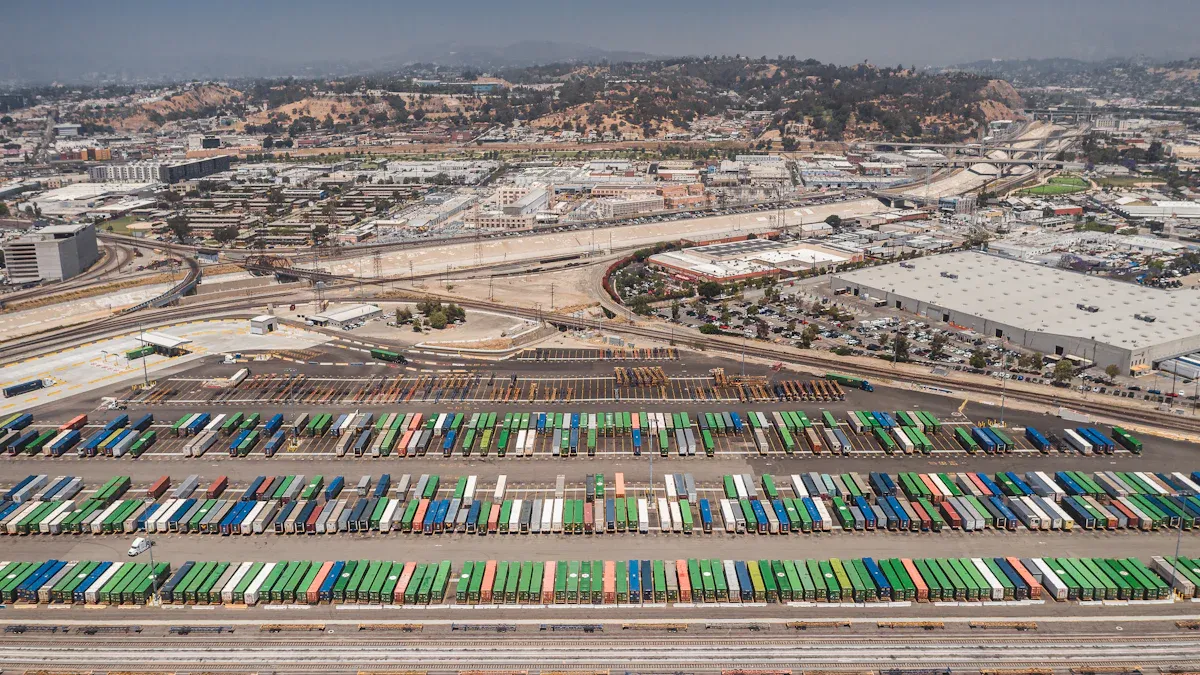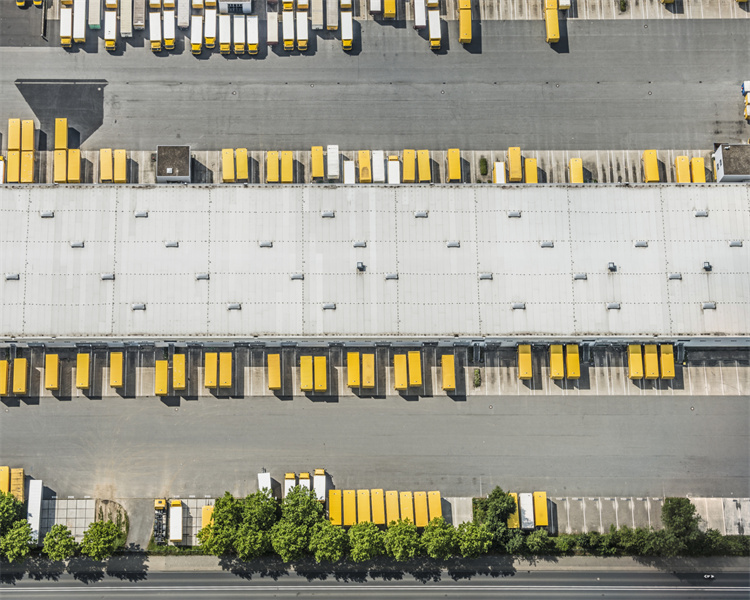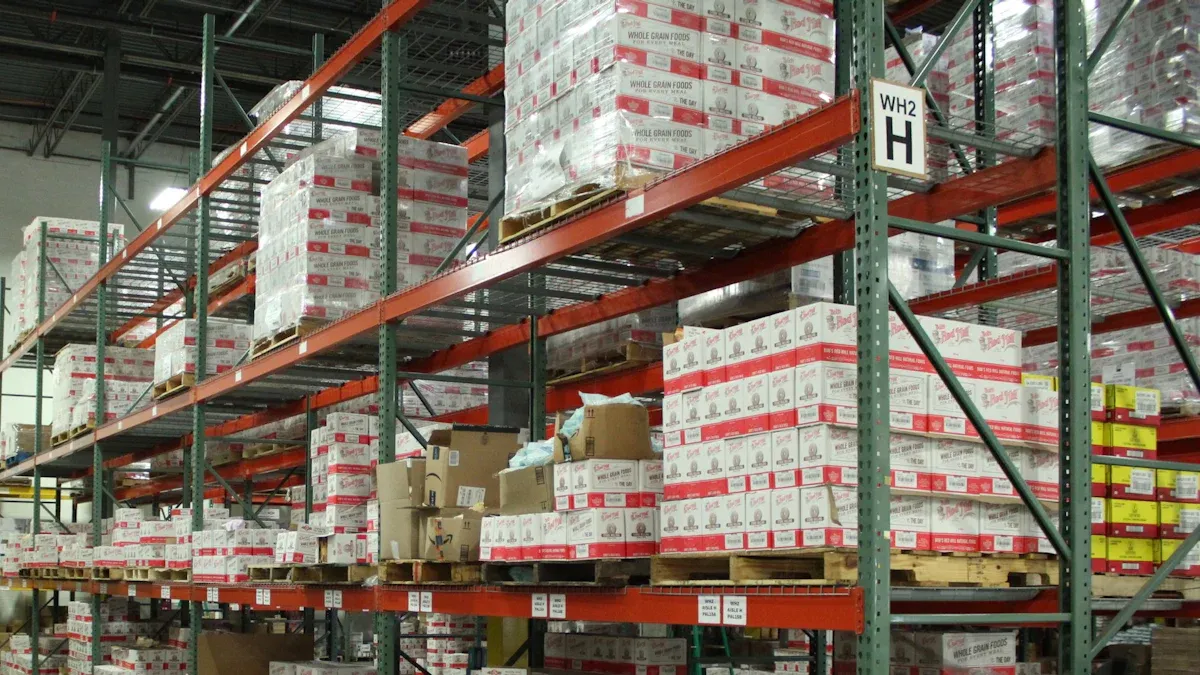Strategic Fulfillment Distribution Locations: Optimizing Your Supply Chain Network

You want your business to deliver products quickly and cost-effectively. Start by looking closely at your product needs and what your customers expect. Geography plays a big role in Fulfillment Distribution. Being near your customers helps you ship faster and save on costs. Smart location choices help you balance speed, inventory, and expenses.
Key Takeaways
Choose fulfillment locations close to your main customers to speed up delivery and lower shipping costs.
Balance inventory levels carefully to avoid running out of stock or paying too much for storage.
Use data and technology to track customer demand, shipping times, and inventory for smarter decisions.
Pick the right fulfillment model—in-house, 3PL, or hybrid—based on your business size, control needs, and growth plans.
Plan your expansion and location choices regularly to keep delivery fast, costs low, and customers happy.
Fulfillment Distribution Strategy
What It Means
You need a clear plan to get products from your business to your customers. Fulfillment Distribution strategy is the way you decide where to store your products and how to deliver them. This strategy helps you meet customer needs and control costs. You look at your products, your customers, and your shipping options. You choose locations that make sense for your business.
A good Fulfillment Distribution strategy answers these questions:
Where do your products come from?
Where do your customers live?
How fast do you need to deliver orders?
How much inventory do you want to keep at each location?
Tip: Write down your answers to these questions. This will help you see what matters most for your business.
Why Location Matters
Location shapes how fast and how well you serve your customers. If you place your fulfillment centers close to your biggest customer groups, you can ship faster and save money. You also lower the risk of delays. For example, if you have many customers on the West Coast, a center in California can help you deliver quickly.
Think about these factors when picking a location:
Proximity to highways and railroads for easy shipping.
Access to large population centers for more efficient delivery.
Customer expectations for fast shipping.
A smart location choice can set your business apart. You can meet customer demands and keep your shipping costs low. This is why your Fulfillment Distribution strategy should always include a careful look at location.
Key Location Factors

Product Requirements
You need to start by looking at your product. Ask yourself where your product comes from and where it needs to go. Some products are heavy or bulky. Others are small and light. The size and weight of your product can change your shipping costs. If you sell items that spoil or break easily, you may need special storage or faster delivery.
Think about how much inventory you want to keep on hand. If you sell fast-moving products, you may need more stock in each location. If your products are expensive or take up a lot of space, you may want to keep less inventory. Mapping out customer demand helps you decide how much to store and where to store it.
Tip: Make a list of your product’s special needs. This helps you choose the right location for your Fulfillment Distribution center.
Customer Proximity
You want to be close to your customers. When you place your fulfillment center near your biggest customer groups, you can ship faster and save money. Customers today expect quick delivery. Many want same-day or next-day shipping. If your center is far away, shipping takes longer and costs more.
Use a map to see where most of your customers live. You may find that one area has more orders than others. Placing your center near this area can help you meet customer expectations. Sometimes, you may need more than one location to cover different regions.
Being close to customers means:
Faster shipping times
Lower shipping costs
Happier customers
Geography and Transportation
Geography shapes your shipping options. You should look for locations near major highways, railroads, or airports. These places make it easier to move products in and out. For example, centers in Southern California, Dallas-Fort Worth, or New Jersey-Pennsylvania can reach large parts of the country quickly.
A table can help you compare locations:
Location | Near Highways | Near Railroads | Near Airports | Population Center |
|---|---|---|---|---|
Southern California | ✅ | ✅ | ✅ | ✅ |
Dallas-Fort Worth | ✅ | ✅ | ✅ | ✅ |
New Jersey-Pennsylvania | ✅ | ✅ | ✅ | ✅ |
Note: Choosing a location with good transportation links helps you ship faster and control costs.
Inventory Management
Inventory management means deciding how much product to keep at each location. If you have too much inventory, you spend more on storage. If you have too little, you may run out and disappoint customers. You need to balance these risks.
You can use data to track sales and predict demand. This helps you keep the right amount of stock in each center. If you use more than one location, you must plan carefully. Moving inventory between centers can cost time and money.
Good inventory management helps you:
Avoid running out of stock
Reduce storage costs
Meet customer demand
Pro Tip: Review your inventory levels often. Adjust your plan as your business grows or as customer demand changes.
Cost and Scalability
Shipping Costs
Shipping costs can change a lot depending on where you place your fulfillment centers. You want to keep costs low and deliver quickly. Carriers use shipping zones to set prices. These zones show how far your package travels from your center to your customer. Lower zone numbers mean shorter distances and lower costs. Higher zone numbers mean longer distances and higher costs.
Here are some key points about shipping costs and location:
Shipping zones are numbered by distance. Zone 2 is close and costs less. Zone 8 or 9 is far and costs more.
Delivery speed depends on the zone. Zones 1–3 usually deliver in 1–2 days. Zones 7–9 may take 4–6 days.
Placing your centers near your main customer groups lowers the average shipping zone. This saves money and speeds up delivery.
Using more than one center in different regions helps you serve customers in fewer zones.
You can use strategies like zone skipping. This means shipping in bulk to hubs closer to customers.
Multi-carrier platforms let you compare rates and choose the best option.
Regularly check your shipping data. Adjust your warehouse locations to balance cost and speed.
Tip: Map your customer locations and review shipping data often. This helps you find the best places for your centers.
Expansion Planning
As your business grows, you need to plan for more orders and new regions. Expansion planning helps you scale up without losing control of costs or delivery speed. You should look at your sales trends and customer maps. This shows where demand is rising.
Start by asking these questions:
Where are new customers coming from?
How much inventory do you need in each region?
What shipping options work best for new areas?
You may need to open new centers or partner with local warehouses. This keeps shipping zones low and delivery times short. You can also test new locations before making big changes. Use data to guide your decisions. Stay flexible so you can adjust as your business changes.
Pro Tip: Plan for growth by reviewing your fulfillment strategy every few months. This helps you stay ahead and keep customers happy.
Fulfillment Distribution Models

Choosing the right Fulfillment Distribution model shapes how you serve your customers. You have three main options: In-House, Third-Party Logistics (3PL), and Hybrid Approach. Each model has strengths and weaknesses. Your choice affects your location strategy, costs, and how fast you deliver orders.
In-House
With an in-house model, you manage your own warehouses and staff. You control every step, from storing products to shipping orders. This model gives you full oversight.
Pros:
You set your own rules and processes.
You can respond quickly to changes in demand.
You keep direct control over inventory and quality.
Cons:
You pay for warehouse space, equipment, and workers.
You handle all the logistics and planning.
You may find it hard to scale up as your business grows.
If you have unique products or special handling needs, in-house may work best. You can pick locations close to your main customers. This helps you deliver faster and save on shipping. You need to plan carefully, though. Running your own centers takes time and money.
Tip: Use in-house if you want full control and have the resources to manage your own operations.
Third-Party Logistics (3PL)
A 3PL provider stores your products and ships orders for you. You use their warehouses, staff, and systems. Many businesses choose this model to save time and money.
Pros:
You do not need to invest in your own buildings or staff.
You can use the provider’s network of locations.
You can scale up or down as your business changes.
Cons:
You give up some control over daily operations.
You may have less flexibility with special requests.
You rely on the provider’s systems and processes.
A 3PL can help you reach more customers by using their centers in different regions. This lowers shipping times and costs. You can focus on growing your business while the 3PL handles the logistics.
Note: Choose a 3PL with locations near your main customer groups. This helps you meet delivery expectations.
Hybrid Approach
A hybrid approach mixes in-house and 3PL models. You run some warehouses yourself and use a 3PL for other regions. This model gives you flexibility.
Pros:
You keep control where it matters most.
You can test new markets with a 3PL before opening your own center.
You spread risk by not relying on just one method.
Cons:
You must manage two systems at once.
You need clear communication between your team and the 3PL.
You may face higher costs if you do not plan well.
A hybrid model works well if your business is growing fast or if you sell in many regions. You can use your own center for local orders and a 3PL for distant customers. This helps you balance speed, cost, and control.
Pro Tip: Start with a hybrid model if you want to grow but are not ready to invest in many locations.
How to Choose the Right Model
Think about your business size, product type, and customer locations. If you want control and have special needs, in-house may fit best. If you want to save time and reach more areas, try a 3PL. If you want both control and flexibility, use a hybrid approach.
A table can help you compare:
Model | Control | Cost | Scalability | Location Flexibility | Best For |
|---|---|---|---|---|---|
In-House | High | High | Medium | Medium | Unique products, control |
3PL | Low | Low | High | High | Fast growth, wide reach |
Hybrid | Medium | Medium | High | High | Growing, flexible needs |
Remember: Your Fulfillment Distribution model should match your business goals and customer needs.
Technology and Data
Data-Driven Decisions
You can use technology and data to make smarter choices about your fulfillment distribution locations. Data helps you see where your customers live and what they expect. You can track orders, shipping times, and inventory levels. This information lets you spot patterns and find areas for improvement.
Many businesses use software to map customer demand. You can see which regions have the most orders. You can also check how fast you deliver to each area. If you notice slow shipping times in one region, you can consider opening a new center nearby.
Tip: Use order tracking tools to monitor delivery speed and customer satisfaction. This helps you adjust your strategy quickly.
You can also use data to manage inventory. Software can predict which products will sell fast and which will move slowly. You can keep more stock in busy regions and less in others. This reduces storage costs and avoids running out of popular items.
Technology helps you compare shipping rates from different carriers. You can choose the best option for each order. You save money and keep customers happy.
Real-World Examples
Many top companies use data and technology to optimize their fulfillment distribution locations:
Amazon uses a large network of distribution centers. You get fast delivery because Amazon places centers close to big customer groups. They use data to plan routes and offer same-day shipping.
Walmart uses a hub-and-spoke model. You benefit from quick store restocking and lower transportation costs. Walmart places hubs in key regions to support their stores.
Zappos locates its centers to ship orders quickly. You receive your shoes fast, which builds trust and loyalty. Zappos uses technology to track orders and improve customer service.
Note: You can learn from these companies. Use data and technology to find the best locations and improve your fulfillment strategy.
Common Myths
More Locations = Faster Delivery
You might think that adding more fulfillment centers always means faster delivery. This idea sounds simple, but it does not always work that way. More locations can help you reach customers in different regions. However, you also face new challenges.
You must split your inventory across more sites. This can lead to stock shortages at one center while another has too much.
You need to manage more staff, more shipments, and more data.
You may pay higher costs for rent, utilities, and labor at each site.
Note: More locations only help if you plan your inventory and shipping carefully. If you do not match your stock to customer demand, you risk delays and higher costs.
A single, well-placed center near a major population hub can sometimes serve your customers faster than several poorly chosen sites. Always use your sales data to decide where to open new centers.
Outsourcing Is Always Cheaper
Many people believe that outsourcing fulfillment to a third-party logistics provider (3PL) always saves money. This is not always true. Outsourcing can lower your upfront costs because you do not need to build or staff your own warehouse. However, you must look at the full picture.
3PLs charge fees for storage, picking, packing, and shipping.
You may pay extra for special services or fast shipping.
You might lose some control over how your products are handled.
Tip: Always compare the total costs of outsourcing with running your own center. Look at your order volume, product type, and customer needs.
Sometimes, a hybrid approach works best. You can use a 3PL for some regions and manage your own center for others. This gives you more control and flexibility.
Remember: Myths can lead to costly mistakes. Use facts and data to guide your fulfillment strategy.
You can choose the best locations by mapping customer demand, checking shipping costs, and reviewing inventory needs. Balance speed, cost, and scalability for strong results. Take time to review your current strategy. Ask experts if you want more help. 📈 Ready to improve your process? Explore resources or reach out for guidance.
FAQ
How do I know if I need more than one fulfillment center?
You can check your order data. If you see many customers in different regions, more centers may help. This can lower shipping times and costs. Use a map to spot customer clusters.
What is the best way to choose a fulfillment center location?
Start by mapping where most of your customers live. Pick locations near large population centers and major highways. This helps you ship faster and save money.
Can technology help me manage my fulfillment locations?
Yes! You can use software to track orders, manage inventory, and see where customers live. Data tools help you make smart choices about where to place your centers.
Will adding more centers always lower my shipping costs?
Not always. More centers can mean higher storage and staff costs. You need to balance shipping savings with these extra expenses. Review your data before adding new locations.
Should I use a 3PL or manage fulfillment myself?
You should look at your business size, product needs, and growth plans. A 3PL can help you scale quickly. Managing fulfillment yourself gives you more control. Some businesses use both methods.
See Also
Effective Strategies To Optimize Supply Chains For Success
Discover Five Cutting-Edge Methods To Enhance Supply Chains
JUSDA Transforms Logistics With Advanced Efficiency Solutions
